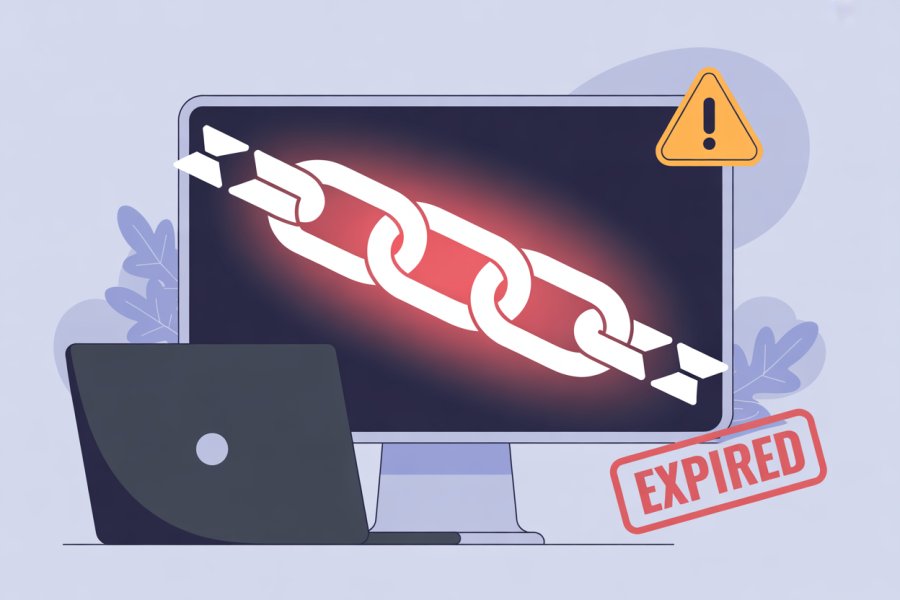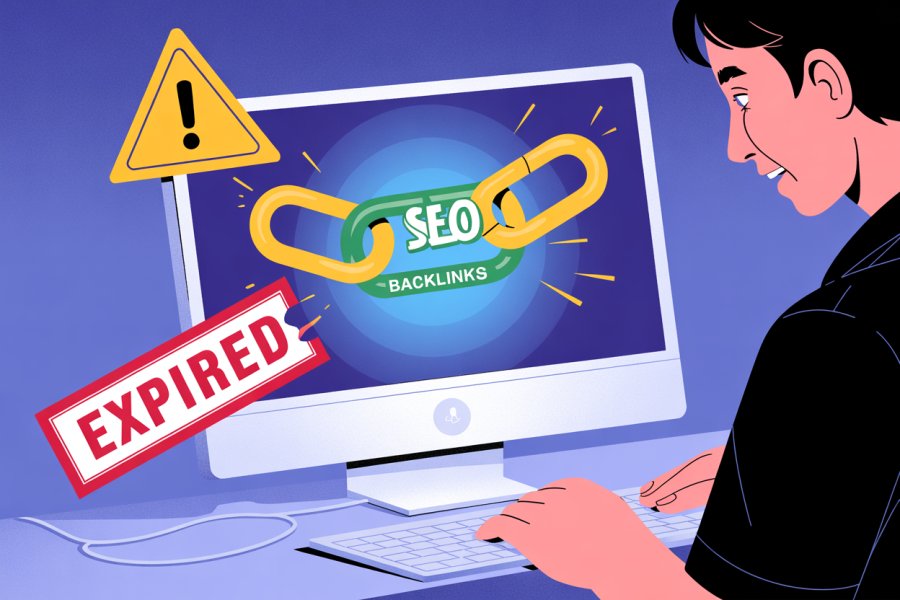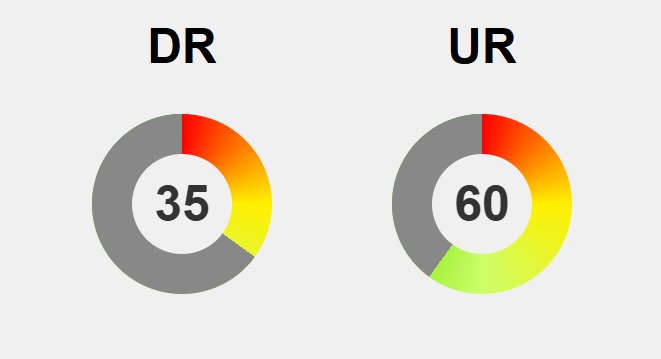Are temporary backlinks from online marketplaces truly harmless, or do they secretly undermine your long-term SEO efforts? Many site owners are lured by promises of quick authority boosts through low-quality links from link farms, PBNs, or automated services. While these short-lived links can spike your metrics temporarily, they often disappear within weeks, leaving your site’s actual authority weakened and vulnerable to penalties from increasingly savvy search algorithms. This rollercoaster of fleeting gains discourages sustainable growth, especially as search engines refine their ability to detect manipulation. Conversely, authentic, permanent backlinks built over time from reputable sources provide a resilient foundation, enhancing trust and relevance. The key question is: should you chase quick wins or invest in a future-proof SEO strategy rooted in quality and ethics? As algorithms evolve, the smarter choice is clear—focus on genuine relationships, high-quality content, and relevance to ensure your rankings endure beyond the fleeting illusion of shortcuts.

Unveiling Temporary Backlinks: Short-Term SEO Boosts and Their Hidden Costs
Temporary backlinks are links from one website to another that are meant to exist only for a short period—often just a few weeks or months. These links are usually purchased through online marketplaces, freelance platforms, or specialized SEO services that promise quick results. Many site owners see them as a fast way to boost metrics like Domain Authority (DA) or Domain Rating (DR), hoping that higher scores will improve search rankings.
Because they’re easy to buy and quick to implement, temporary backlinks are attractive for those looking for immediate gains. They often come from low-quality or irrelevant sites, generated through automated systems, link farms, or private blog networks (PBNs). These methods can produce a large number of links rapidly, creating a false sense of authority and progress.
Most of these links are designed to be short-lived. Once a website reaches a certain DA or DR target, the links are typically removed—sometimes within 50 to 60 days. Vendors do this to reuse the same domains and link placements for other clients, making the boost temporary rather than permanent. As a result, the authority gained from these links usually diminishes quickly once they disappear.
This cycle creates an illusion of growth that isn’t built on a stable foundation. Many website owners don’t realize these links are temporary, which leads to overestimating their site’s genuine authority. Search engines are getting better at recognizing manipulative link schemes, especially when many links come from low-quality sources, risking penalties or devaluation of the site’s backlink profile.
Understanding what these backlinks are and how they function is crucial. They might deliver a quick spike in SEO metrics, but they lack durability. Relying on such tactics can ultimately undermine a site’s long-term health, as search engines continue to refine their ability to detect and penalize manipulative link-building schemes.
Recognizing the temporary nature of these backlinks helps inform smarter SEO choices. Instead of chasing short-term wins, focus on building lasting, relevant backlinks that contribute to your site’s authority in a meaningful, sustainable way. That approach creates a stronger, more resilient online presence over time.
Impact of Temporary Backlinks on Search Rankings and Long-Term Stability
Temporary backlinks can provide a quick lift to your search engine rankings, but that boost often comes with a hidden cost. When you acquire these links, they may temporarily boost your site’s perceived authority, leading search engines to rank you higher in the short term. For example, a sudden influx of backlinks from low-quality or irrelevant sites can cause your domain authority or domain rating to spike within days, giving the illusion of rapid progress. However, this upward momentum is usually short-lived, as search engines quickly recognize the unnatural pattern and adjust accordingly.
Once the links are removed—often after a few weeks or months—the perceived authority your site gained tends to vanish just as rapidly. Search engines are increasingly sophisticated at detecting manipulative link schemes, especially when a site’s backlink profile suddenly shifts with numerous low-quality or irrelevant links. When detected, this can trigger penalties or a devaluation of your backlink profile, often resulting in a significant drop in your rankings. Relying on these temporary links can therefore undermine your long-term SEO health by creating an unstable foundation that search engines view with suspicion.
The instability of these backlinks becomes even more apparent when your rankings fluctuate as links are taken down. If your entire SEO strategy depends heavily on short-term boosts, any loss of links can undo the progress you’ve made, leaving you back at square one. This rollercoaster of gains and losses makes it difficult to build a steady, sustainable growth trajectory. Search engines are constantly refining their algorithms to spot patterns of manipulation, and sudden spikes from low-quality sources are often flagged as suspicious activity.
Moreover, many of these manipulative tactics are flagged by search engines’ ongoing updates. They analyze backlink patterns, anchor text diversity, and the speed at which links are acquired. When algorithms identify unnatural behaviors—like rapid bursts of low-quality links—they may penalize your site or devalue those links altogether. This not only damages your current rankings but makes future efforts to improve SEO more difficult, as your profile appears manipulative rather than authoritative.
In contrast, sustainable SEO depends on building durable, high-quality backlinks from reputable sources. These links grow naturally over time, signaling genuine trustworthiness and relevance. They last longer, withstand algorithm updates, and contribute steadily to your site’s authority. While acquiring such links demands patience and effort, they provide a reliable foundation for long-term growth—far more valuable than the fleeting gains of temporary backlinks.

Temporary vs. Lifetime Backlinks: Which Builds a Stronger, Sustainable SEO Foundation?
Temporary backlinks might give your SEO metrics a quick boost, but they lack the staying power of high-quality, permanent links. Often created through automated tools, link farms, or private blog networks, these short-term links can inflate your domain authority or domain rating temporarily. However, once the links are removed—usually after a few weeks or months—your rankings tend to fall back or even dip lower than before. Genuine backlinks from reputable sources, on the other hand, develop over time and are built around relevance, trust, and authority.
Permanent backlinks aren’t just numbers; they reflect your site’s true credibility. These links come from relevant, authoritative websites within your industry and are earned through quality content, outreach, and authentic relationships. Unlike short-lived links, they tend to last for years, continuously supporting your site’s stability and reputation. While acquiring them requires effort and patience, they provide a sustainable foundation that resists the fluctuations caused by algorithm updates and market shifts.
The key difference lies in their impact over the long haul. Short-term backlinks might push your rankings upward quickly, but they don’t foster genuine trust or relevance. When these links disappear, your authority diminishes, often causing a swift decline in your search positions. Conversely, durable backlinks from trusted sources act as enduring endorsements, gradually strengthening your overall SEO profile. This steady growth helps build resilience against search engine algorithm changes and competitive pressures.
Search engines have grown more sophisticated at detecting unnatural link schemes. They analyze backlink patterns, anchor text diversity, and the speed at which links are acquired. Sudden spikes from low-quality or irrelevant sites often trigger red flags, resulting in penalties or devaluation of your backlink profile. Relying heavily on temporary links can backfire, risking your site’s credibility and making future SEO efforts more challenging. Building a natural, high-quality backlink profile is a long-term process rooted in relevance and trust, not shortcuts.
While temporary backlinks might seem tempting for quick results, they don’t support sustainable growth. High-quality, permanent backlinks from relevant, authoritative sites create a stable, lasting foundation. These links develop gradually but provide ongoing value, helping your site maintain higher rankings over time. Investing in relationships, content quality, and relevance may take longer, but the long-term benefits far outweigh the fleeting gains of short-term schemes.
Choosing between these approaches ultimately depends on your SEO strategy. Quick fixes might offer temporary visibility boosts, but they come with risks and limited staying power. Focus instead on earning durable, relevant backlinks that genuinely reflect your site’s authority and trustworthiness. This approach not only improves your current rankings but ensures your SEO efforts stand firm against future algorithm updates and industry changes. Building a resilient backlink profile is the smarter, more sustainable path to long-term success.
Red Flags in Buying SEO Backlinks: How to Spot Risky and Short-Lived Links
When considering the purchase of backlinks, spotting red flags early can save your site from long-term damage. One of the clearest warning signs is a lack of transparency from the seller. If they hesitate to specify where the links will be placed, how long they will last, or provide proof of the hosting sites, it’s a major red flag. Trustworthy providers should be open about their sources and willing to answer questions about the permanence of the links. Vague or evasive responses usually indicate shady schemes designed solely for quick, fleeting results.
Another warning sign is an abrupt spike in backlinks from low-quality or irrelevant sites. Search engines are getting better at detecting unnatural patterns, especially when a website’s backlink profile shifts suddenly and dramatically. If the links come from spammy, unrelated domains or appear to be generated en masse, it’s likely part of an unstable scheme. Such links are often short-lived and can trigger penalties once identified, ultimately harming your site’s credibility more than helping.
Links from sites that look like nothing more than spam or link farms are a clear red flag. If the hosting sites are filled with irrelevant content, have thin pages, or seem created solely for link exchanges, trustworthiness is in question. Search engines recognize these networks easily, and relying on them can lead to devaluation or penalties, undoing any initial gains and damaging your long-term SEO efforts.
Promising rapid, large-scale link growth at suspiciously low prices is another warning sign. These offers often rely on automated link generation or private blog networks that are inherently unstable. While they might deliver a quick boost, they tend to be short-lived, and once detected, search engines may penalize your site, resulting in a drop in rankings and reputation.
Patterns of many links originating from the same IP addresses or duplicated domains also raise red flags. When many backlinks come from a controlled network of sites, it indicates manipulative tactics designed to game the system. Search engines can spot these schemes easily, and such links are often devalued or removed during algorithm updates. A natural, diverse backlink profile is key to sustainable growth.
Irrelevant backlinks from outside your niche or industry suggest a manipulative or careless approach. Search engines value contextual relevance, so links from unrelated topics can look suspicious. Over time, these disconnected links can harm your credibility and may trigger algorithmic penalties if they appear spammy or unnatural.
Finally, be cautious if the seller offers no ongoing support or fails to monitor the backlink’s status after purchase. Reliable providers should help you track your links and assess their effectiveness. If they avoid these conversations, it’s a sign they’re focused on quick sales rather than building a sustainable, trustworthy link profile. Recognizing these red flags helps you steer clear of schemes that might provide short-term gains but threaten your long-term SEO health.

Future Trends in SEO: Embracing Sustainable Strategies for Lasting Success
As SEO continues to evolve, the emphasis is shifting more than ever toward authenticity and sustainable strategies. Search engines are becoming increasingly adept at spotting manipulative tactics like short-lived backlinks from marketplaces. Relying on quick fixes might deliver immediate gains, but these are unlikely to withstand the scrutiny of advanced algorithms. Building genuine authority through relevance, high-quality content, and meaningful relationships remains the most reliable path forward.
Emerging trends highlight a future where trust and relevance dominate. Collaborating with influencers, creating insightful content, and engaging in targeted outreach are gaining traction because they produce durable backlinks that genuinely matter. These methods not only boost authority but also foster credibility, signaling to search engines that your site is a trusted source. As AI and machine learning tools become more sophisticated, they will facilitate identifying natural link-building opportunities, making it easier to develop a diverse and trustworthy backlink profile.
Google’s ongoing algorithm updates are sharpening their ability to detect unnatural link schemes. Schemes like link farms or bulk low-quality backlinks are increasingly easy for search engines to identify and penalize. Sites relying on these shortcuts risk falling behind or facing penalties that can strip away years of hard-earned progress. Instead, the focus is shifting toward building a balanced profile through genuine outreach—guest posting, content collaborations, and industry partnerships—that reflects real authority.
Looking ahead, the importance of user experience and content relevance will only grow. Search engines prioritize sites that provide real value, so earning backlinks from reputable sources through high-quality content becomes essential. This approach takes patience but results in a resilient online presence capable of weathering industry shifts and algorithm changes. The long-term payoff lies in cultivating trust and authority, rather than chasing fleeting rankings through manipulative tactics.
Sustainable SEO practices also involve fostering authentic relationships within your industry. Building relationships with thought leaders, participating in industry forums, and creating shareable content all contribute to a natural backlink profile. These strategies are far more effective for long-term growth than quick, manipulative schemes, which often lead to penalties or devaluation. The goal is to create a reputation that’s rooted in credibility, relevance, and ongoing engagement.
Transparency and ethical practices will define the future of SEO. Search engines are prioritizing signals of trustworthiness—such as relevance, user engagement, and authoritative content—over manipulative link-building. Sites that invest in creating real value and fostering genuine connections will outperform those relying on shortcuts. Patience and consistent effort remain the best tools for building a resilient, long-lasting online presence that can adapt to industry changes.
In this shifting landscape, the smartest move is to focus on the long game. Developing high-quality content, earning relevant backlinks, and nurturing industry relationships create a solid foundation that won’t crumble under algorithm updates. The future favors websites that prioritize trust, relevance, and ethical growth over short-term tricks. Investing in these principles now ensures your SEO efforts will remain effective, sustainable, and capable of supporting your site’s success well into the future.







